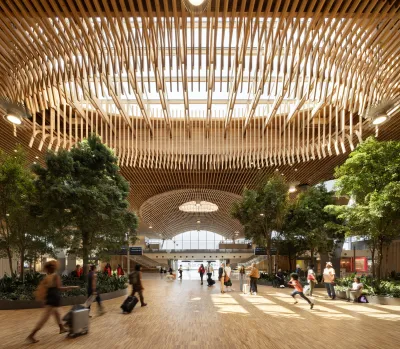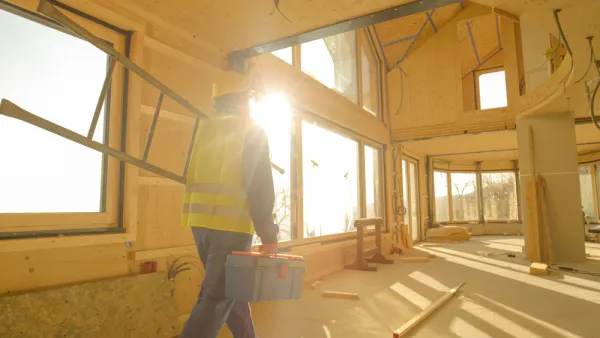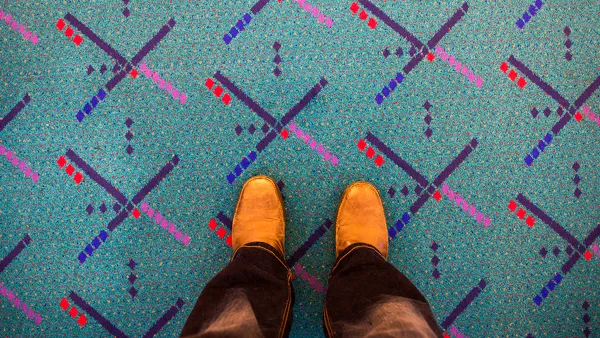Needing to expand to accommodate 35 million annual passengers by 2045 but constrained by Portland’s urban growth boundary, PDX had to think outside the box when planning its expansion. The result is a case study in sustainability.

The first phase of the nearly $2 billion expansion and renovation of Portland International Airport, commonly known as PDX, opened in August. It’s a novel project that has turned PDX into America’s largest mass-timber airport and, according to a recent article from Metropolis, represents a massive milestone for the mass-timber industry. It’s also an example of innovative, creative thinking to address a spate of challenges, including limited space for expansion because of the local urban growth boundary, lack of feasibility around building conjoining existing buildings, the need for seismic resilience against earthquakes, and the fact the existing terminal needed to stay operational during construction, and a desire for sustainability. The solution? Prefabricate a nine-acre wood roof at the edge of PDX’s grounds and slide it into place over top the existing, operational terminal.
“By choosing [a] rebuild over a new airport, the project reduced its carbon footprint by 70 percent, but this required complicated choreography,” Brian Libby, reports for Metropolis. The roof is made with 3.5 million board feet of Douglas Fir sourced from landowners and mills within a 300-mile radius of the airport. According to the article, “The just-completed first phase, built underneath [the timber roof], includes new check-in counters, a Market Hall lined with local businesses, enlarged security checkpoints, and a so-called ‘walk in the forest’: that includes 5,000 plants and 72 mature black walnut, ficus, and olive trees, courtesy of Portland landscape architecture studio PLACE. Phase 2, with passenger exit lanes, additional shopping-dining areas, and north-south views through walls of glass, opens in late 2025.”
FULL STORY: Forest to Frame: Why Portland’s Airport is a New Milestone for Mass Timber

National Parks Layoffs Will Cause Communities to Lose Billions
Thousands of essential park workers were laid off this week, just before the busy spring break season.

Retro-silient?: America’s First “Eco-burb,” The Woodlands Turns 50
A master-planned community north of Houston offers lessons on green infrastructure and resilient design, but falls short of its founder’s lofty affordability and walkability goals.

Delivering for America Plan Will Downgrade Mail Service in at Least 49.5 Percent of Zip Codes
Republican and Democrat lawmakers criticize the plan for its disproportionate negative impact on rural communities.

Test News Post 1
This is a summary

Test News Headline 46
Test for the image on the front page.

Balancing Bombs and Butterflies: How the National Guard Protects a Rare Species
The National Guard at Fort Indiantown Gap uses GIS technology and land management strategies to balance military training with conservation efforts, ensuring the survival of the rare eastern regal fritillary butterfly.
Urban Design for Planners 1: Software Tools
This six-course series explores essential urban design concepts using open source software and equips planners with the tools they need to participate fully in the urban design process.
Planning for Universal Design
Learn the tools for implementing Universal Design in planning regulations.
EMC Planning Group, Inc.
Planetizen
Planetizen
Mpact (formerly Rail~Volution)
Great Falls Development Authority, Inc.
HUDs Office of Policy Development and Research
NYU Wagner Graduate School of Public Service





























